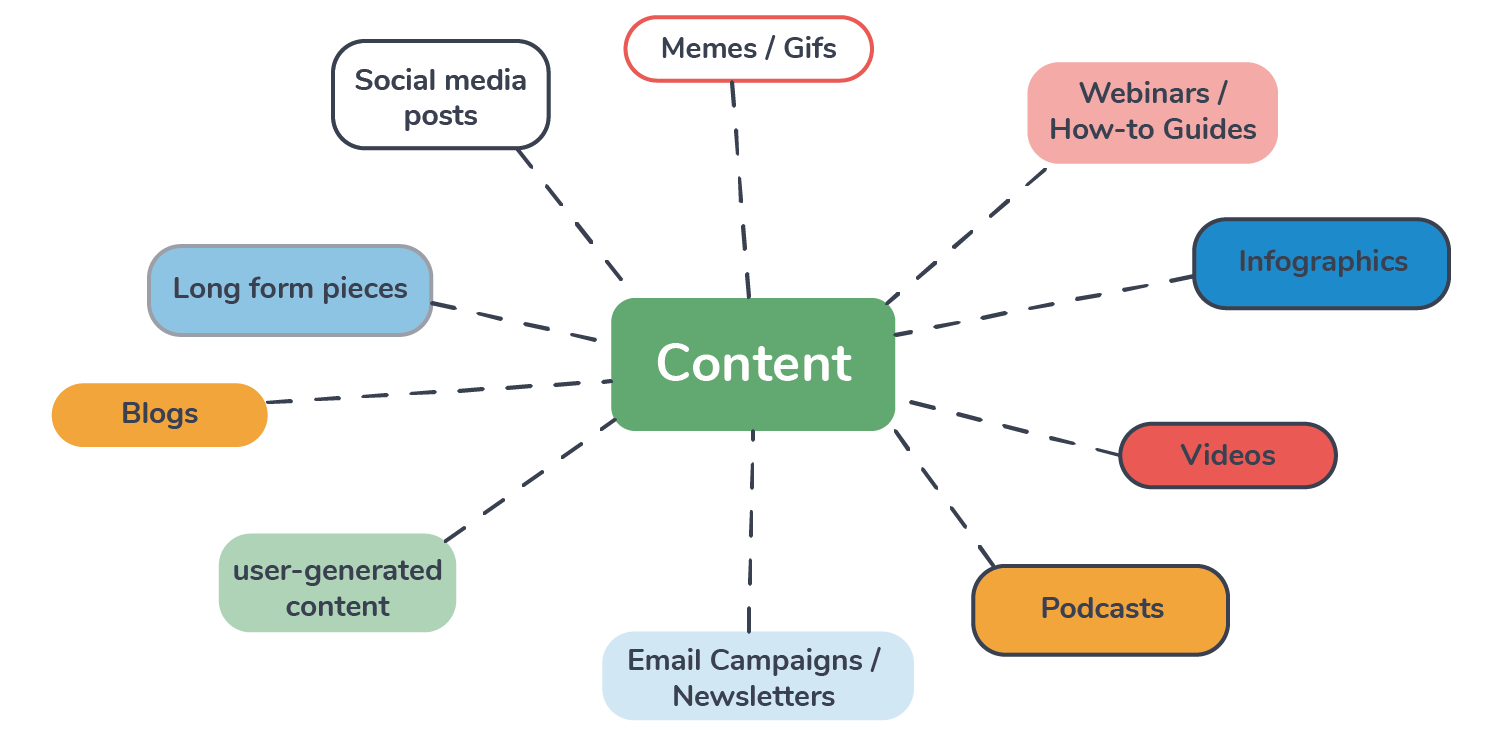- Home
- About Us
- Services
- Industries
- Portfolio
- Packages
- Our Clients
- Contact
Unlike traditional advertising, content marketing aims to build trust and authority by providing useful
information to the audience, rather than directly promoting a product or service. Here are the key components and strategies involved in content marketing

Goal Setting: Define clear objectives for your content marketing efforts, such as brand awareness, lead generation, customer engagement, or sales.
Audience Research: Identify and understand your target audience’s needs, preferences, and behaviors to create content that resonates with them.
Content Planning: Develop a content calendar that outlines the topics, formats, and publishing schedule to ensure consistency and organization.
High-Quality Content: Produce content that is informative, engaging, and relevant to your audience. This can include blog posts, articles, videos, infographics, podcasts, e-books, and more.
Originality and Authenticity: Ensure that the content is original and reflects your brand’s voice and values.
SEO Optimization: Incorporate relevant keywords, meta tags, and other SEO best practices to improve search engine visibility and attract organic traffic.
Blog Posts: Regularly updated articles on your website that provide valuable information, insights, and tips related to your industry or niche.
Videos: Engaging visual content that can explain complex topics, showcase products, or tell stories in a compelling way.
Infographics: Visual representations of data or information that make complex ideas easy to understand and share.
E-Books and Whitepapers: In-depth, downloadable content that provides comprehensive information on specific topics, often used for lead generation.
Podcasts: Audio content that allows you to share expertise, interviews, and discussions on relevant topics.
Social Media Posts: Short, engaging content designed for social media platforms to increase brand visibility and engage with your audience.

Interaction: Encourage and respond to comments, questions, and feedback from your audience to build relationships and foster community.
Personalization: Tailor content to different segments of your audience based on their interests and behavior.
User-Generated Content: Encourage your audience to create and share their own content related to your brand, such as reviews, testimonials, and social media posts.
KPIs and Metrics: Define key performance indicators (KPIs) to measure the success of your content marketing efforts, such as website traffic, engagement, leads, conversions, and return on investment (ROI).
Analytics Tools: Use tools like Google Analytics, social media analytics, and marketing automation platforms to track and analyze performance.
Continuous Improvement: Regularly review analytics data to identify what’s working and what’s not, and adjust your strategy accordingly to improve results.
Owned Media: Use your own platforms, such as your website, blog, and email newsletter, to distribute content.
Earned Media: Gain exposure through organic mentions, shares, and backlinks from other websites, influencers, and media outlets.
Paid Media: Promote your content through paid channels, such as social media ads, sponsored content, and pay-per-click advertising.
Reuse and Adapt: Take existing content and repurpose it into different formats to reach a wider audience and maximize its value. For example, turn a blog post into a video, infographic, or podcast episode.
Content Updates: Regularly update and refresh older content to keep it relevant and valuable for your audience.
Brand Story: Craft a compelling brand story that communicates your values, mission, and vision in a way that resonates with your audience.
Customer Stories: Share stories of your customers' experiences and successes to build trust and credibility.
Partnerships: Collaborate with influencers and industry experts to co-create content, reach new audiences, and enhance credibility.
Guest Contributions: Invite guest writers or speakers to contribute to your content, bringing fresh perspectives and expanding your reach.
Editorial Guidelines: Establish clear guidelines for content creation, including tone of voice, style, and quality standards.
Approval Processes: Implement a streamlined process for reviewing and approving content to maintain consistency and quality.
Below are some of the technology tools and languages we are conversant in. As a top website
redesign agency,
we keep ourselves abreast of the latest technology developments.
HTML5
CSS3
JavaScript
Bootstrap4
Angular
PHP7
Codeigniter
Laravel
MySQL
Jquery
Finished Project
Happy Clients
Skilled Experts
Experience
Let us know what you need and we’ll handle the rest.


Highly customizable to fit unique business needs.
Free to use with affordable premium themes and modules.
Large community of developers and users offering support, modules, and plugins.
Suitable for small startups to large enterprises.